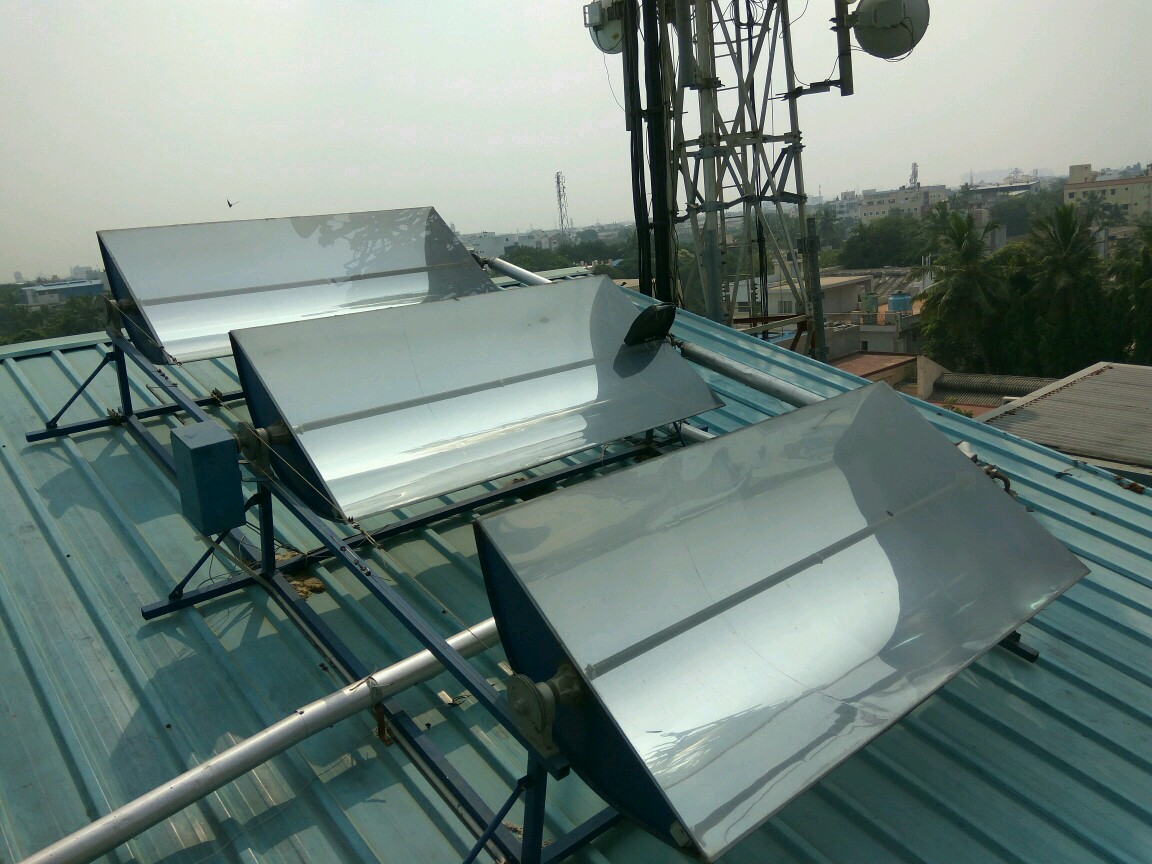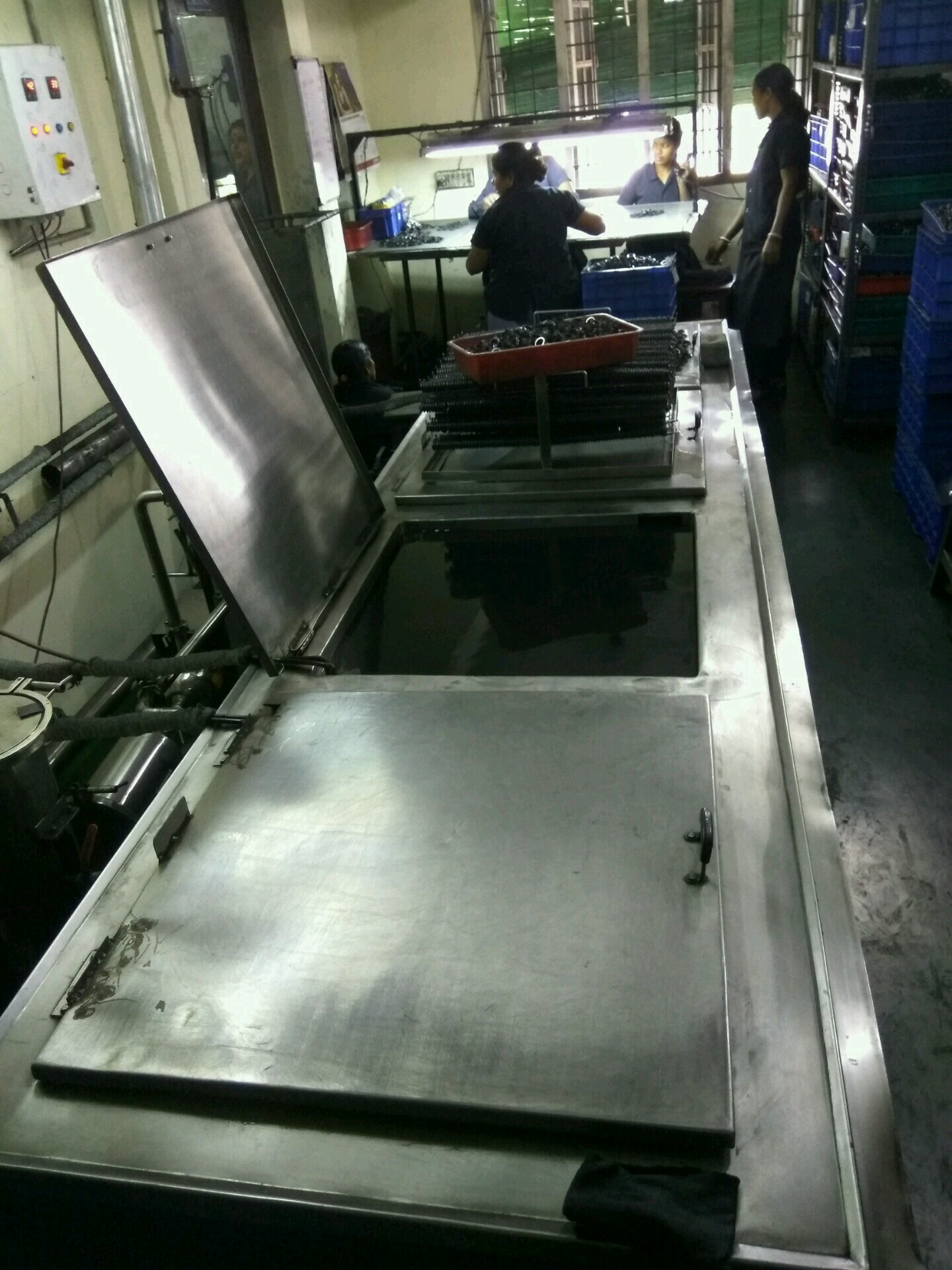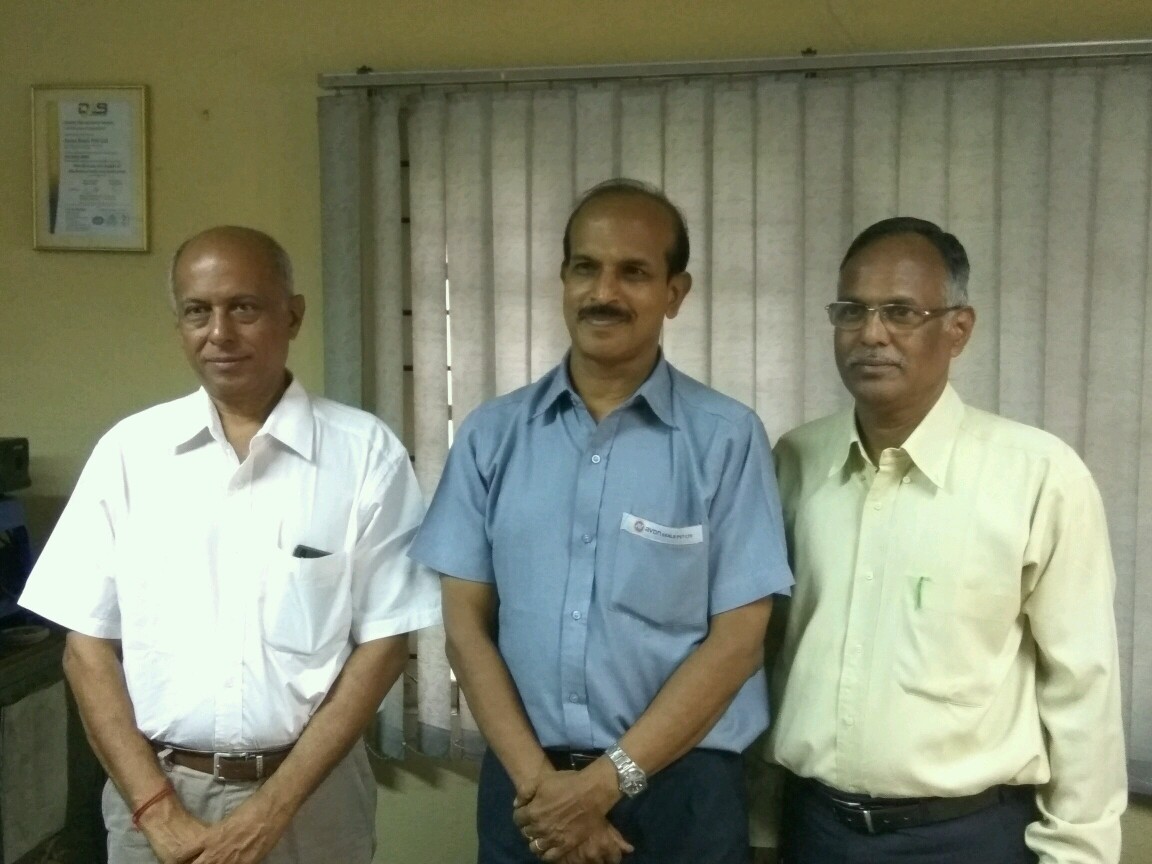Solar Mango recently visited a solar installation in Chennai. Unlike Solar Mango’s usual site visits which focused on solar PV, this was a solar thermal installation.
The site was the manufacturing unit of Avon Seals Pvt Ltd, a manufacturer of mechanical seals for domestic and agricultural pumps in India, at Ambattur Industrial Estate, Chennai. The company installed a parabolic trough solar concentrator (PTSC) on their rooftop to meet their heating requirements.
Avon Seals Pvt Ltd, motivated by their initiative to go green, decided to go for the parabolic trough solution for meeting a portion of their heating needs.
The heat energy generated by the parabolic trough system is utilized for the purpose of ultrasonic cleaning of the seals up to a temperature of 70 -80 degrees Celsius. The PTSC unit is a complementary heat source that is used in conjunction with a 12 kW electric power source. It works as a hybrid system now.
A snapshot of the parabolic trough installation is given below.

Figure 1: Parabolic Trough Installation at Avon Seals Pvt Ltd, Ambattur, Chennai
What are the components of the PTSC unit?
The major components of the parabolic trough unit are
- Collector
- Receiver
- Tracking system
- Mounting structure
The collector is in the shape of a parabola composed of a polished mirror. The parabolic mirror focusses the sunlight onto a metal tube which consists of a thermic fluid (oil). The heat absorbed by the thermic fluid, which reaches a temperature of 100 degrees Celsius, is transferred via a heat exchanger to the water for ultrasonic cleaning.

Figure 2 : Ultrasonic Cleaning Machine at Avon Seals Factory
The Balance of System (BoS) components such as pumps, storage tanks, heat exchangers, and pipelines.
Design and Installation
The design and installation of the PTSC plant were carried out by Acclaim Technology Services, a technical design and engineering design consultancy based out of Chennai. Having started as an engineering services provider to chemical industries, Acclaim has diversified its’ focus to the green energy sector.
They have conducted considerable research and development on concentrator solar power/ thermal energy technologies. Years of sector-specific experience and technical proficiency have driven them to develop an indigenous parabolic trough solar concentrator solution to generate hot water, hot air, and direct steam.
The design utilizes a number of sensors. The four sensor units that are built into the design serves specific purposes.
- Two sensors, one each on the west and east side to detect the brightness of sun and position the concentrator to avoid shadowing effects
- One sensor to regulate the tracking resistance in order to ensure the correct positioning of the tracking unit
- One sensor to control the switching on/off of the pump so that it doesn’t function during non-sunny hours
Another key feature of the design is a two-stage geared motor. A two-stage motor ensures that any sort of jerks or vibrations are avoided when the unit is started.
The design is complete with a timer mechanism which automatically switches on/off when the sunlight is low or unavailable.
The maintenance required is minimal with cleaning required once a week. However, in high dust areas, it Is recommended to clean every two days.
Key Features & Benefits
The two highlighting features of the Acclaim’s parabolic trough system are
- Easy installation on pre-fabricated structures
- Simple and low-cost tracking system
Ease of Installation – A clear differentiator of Acclaim’s parabolic trough design is that it can be easily installed on a pre-fabricated structure. Typically, parabolic trough systems do not come with such kind of flexibility.
Low-Cost Tracking system – The tracking system includes the drive, sensors, and controls that tilt the troughs with respect to the direction of the sun thereby maximizing heat energy generation. Although most parabolic trough designs come with tracking units, this photo-sensor based tracking unit is simple in design.
In this case, the system was installed on a metal roof. However, it can be installed on any kind of roof depending on the structure strength and area available.
The key benefits offered by the parabolic trough solar system include
- Easy installation on different rooftop surfaces
- Low cost tracking unit
- Low maintenance
- Carbon footprint reduction
Specifications
|
Aperture per Trough |
2m x 1m |
|
Energy Output per Trough |
750 kcals/hour (375 kcal/m2) |
|
No of Troughs |
6 |
|
Total Output |
4500 kcals/hour (5.25 kWh) |
|
No. of sunlight hours |
6 hours/day |
|
No. of sunny days |
330 days |
|
Total no. of hours |
6 hours/day x 330 days = 1980 hours |
|
Total Energy Supplied |
10395 kWh |
|
Savings |
Rs. 72765/annum (at a grid tariff of Rs. 7/kWh) |
PTSC v/s Other Solar Technologies
Of course, as an investor, there is always the question of which technology (available in the market) to choose from. There is the ever-attractive solar PV for electricity. And then there are solar thermal technologies for industrial heating purposes – evacuated tube collectors (ETC) and parabolic trough collectors.
Highlights
- It is important to understand that solar thermal technologies are attractive to an end-user only if there is a major requirement for heating applications. For electricity needs, solar PV is the obvious solution.
- While evacuated tube collectors (ETC) have efficiencies of 50%, parabolic trough systems have can achieve higher efficiencies of 60-65%.
- Parabolic troughs require relatively less maintenance. ETC systems are faced with the problem of thermal shock due to which the glass breaks and have to be replaced from time to time.
- Moreover, the cost associated with Acclaim’s parabolic trough design is less than a typical ETC solution.
Conclusion
The industrial sector is the largest consumer of energy in India. And approximately 30% of the heat energy used in industries is for heating below 100 degrees Celsius. Currently, the demand is met by fossil fuels like furnace oil, gas, coal, and diesel, which are highly polluting fuels.
In an increasingly climate sensitive environment, there is a huge need of replacing conventional heating technologies with cost-effective and greener solutions. Acclaim Technology Services, through its specialized design expertise, has developed an innovative solution which combines low-cost solution with a high design flexibility to not only help small and medium industries complement their existing heating generating sources but also significantly reduces their carbon footprint.

Figure 3: Mr. Chandra Mohan – Acclaim Technology (left), Mr. A. N. Gireeshan – Avon Seals (middle), Mr. Divakar – Acclaim Technology
Solar Mango wishes Acclaim Technology all the best!
To get in touch with Acclaim Technology, kindly contact Mr. Divakar
Email: acclaim.technology@gmail.com
Ph: 9566057273

 Skip to content
Skip to content

The Solar Trough Technology is a very ideal retrofit for any Industrial Process heat as it can provide heating solutions up to 250 Deg C. The Concentrated Solar Thermal is 72% efficient compared to 12 to 15% in PV. CSP will find applications in almost all major industries that require process heat for Pre-heating of Raw Materials, Cleaning and Washing, Pasteurization, Sterilization, Surface Treatment, Drying, Boiler Feed Water and mainly Supply of Hot water, Steam and Hot Air. Unlike other Renewable Solutions, Solar Trough offers a guaranteed ROI based on current fuel used. As the CSP is a retrofit to existing system the plant down time is Zero even if there is low sunshine or no-sunshine (as in Rainy day) and works in conjuction with existing system to deliver the maximum from Sun Power when available. Thanks to the Auto-shift between CSP & existing system.